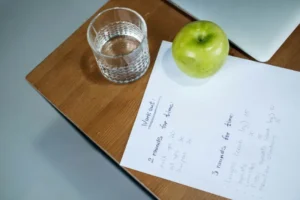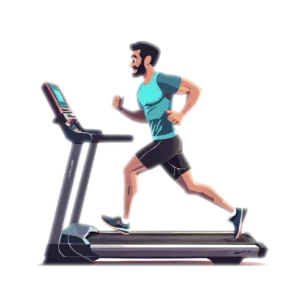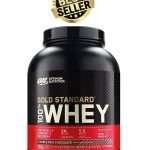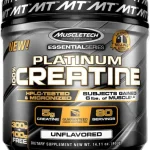Table of Contents:
- Introduction
- The Importance of Regular Exercise
- Defining a Workout Program
- Setting Your Fitness Goals
- Short-term and Long-term Objectives
- Assessing Your Current Fitness Level
- Creating a Personalized Workout Plan
- Choosing the Right Exercises
- Determining Frequency and Intensity
- Incorporating Rest and Recovery
- Essential Workout Equipment
- Home Gym Essentials
- Gym Membership Considerations
- Nutrition for Optimal Results
- Balanced Diet for Athletes
- Hydration and Electrolytes
- Pre-workout and Post-workout Meals
- Warming Up and Cooling Down
- Preventing Injuries
- Enhancing Flexibility
- Common Workout Mistakes and How to Avoid Them
- Overtraining
- Improper Form
- Neglecting Rest
- Staying Motivated and Consistent
- Setting Small, Achievable Goals
- Finding a Workout Buddy
- Tracking Your Progress
- Workout Programs for Different Fitness Levels
- Beginners
- Intermediate
- Advanced
- Conclusion
- The Benefits of a Consistent Workout Routine
- Tips for Long-Term Success
- Frequently Asked Questions
- References
Introduction:
Regular exercise is a cornerstone of a healthy lifestyle. It offers numerous benefits, including improved physical health, mental well-being, and increased longevity. A well-structured workout program can help you achieve your fitness goals, whether it’s losing weight, building muscle, or simply feeling better overall.
A workout program is a personalized plan that outlines your exercise routine, including the types of activities, frequency, intensity, and duration. It should be tailored to your individual needs, fitness level, and goals.
Setting Your Fitness Goals
Before creating a workout program, it’s essential to define your fitness goals. Consider both short-term and long-term objectives. For example, your short-term goals might include losing 5 pounds or running a 5K, while your long-term goals could be building muscle or improving cardiovascular health.
Assessing your current fitness level is also crucial. This will help you determine a starting point for your workout program and avoid setting unrealistic expectations.

Creating a Personalized Workout Plan
Once you have defined your goals and assessed your fitness level, you can start creating your workout plan. This involves choosing the right exercises, determining frequency and intensity, and incorporating rest and recovery.
Choosing the Right Exercises
There are many different types of exercises to choose from, including cardio, strength training, flexibility training, and balance exercises. The best exercises for you will depend on your goals and preferences.
- Cardio: Examples include running, swimming, cycling, and dancing.
- Strength training: Examples include weightlifting, bodyweight exercises, and resistance band training.
- Flexibility training: Examples include yoga, Pilates, and stretching.
- Balance exercises: Examples include tai chi and standing on one leg.
Determining Frequency and Intensity
The frequency and intensity of your workouts will also impact your results. As a general rule, aim for at least 150 minutes of moderate-intensity exercise or 75 minutes of vigorous-intensity exercise per week. You can also incorporate strength training exercises two to three times per week.
The intensity of your workouts can be measured using your heart rate or perceived exertion. Moderate-intensity exercise should make you breathe harder and feel slightly out of breath, but you should still be able to hold a conversation. Vigorous-intensity exercise should make you breathe heavily and feel like you can’t talk much.
Incorporating Rest and Recovery
Rest and recovery are essential for preventing injuries and allowing your muscles to repair and grow. Aim for at least one or two rest days per week.

Essential Workout Equipment
While you can get a great workout without any equipment, having some basic gear can be helpful. Here are some home gym essentials:
- Dumbbells: A set of dumbbells is a versatile piece of equipment that can be used for a variety of exercises.
- Resistance bands: Resistance bands are a great way to add resistance to your workouts without using heavy weights.
- Yoga mat: A yoga mat provides a comfortable surface for stretching and floor exercises.
- Exercise bike or treadmill: If you prefer indoor cardio workouts, an exercise bike or treadmill can be a great investment.
If you don’t have space for a home gym, consider joining a local gym. This will give you access to a wider variety of equipment and classes.

Nutrition for Optimal Results
Proper nutrition is essential for supporting your workout program and achieving your fitness goals. A balanced diet should include plenty of fruits, vegetables, whole grains, lean protein, and healthy fats.
Balanced Diet for Athletes
Athletes need to consume more calories than sedentary individuals to fuel their workouts. However, it’s important to choose healthy, nutrient-dense foods.
Staying hydrated is crucial for optimal performance and recovery. Drink plenty of water throughout the day, especially during and after your workouts. If you’re sweating heavily, you may also need to replenish electrolytes.
Pre-workout and Post-workout Meals
Eating a balanced meal before your workout will provide you with the energy you need to perform at your best. After your workout, it’s important to refuel your muscles with a protein-rich meal or snack.
Warming Up and Cooling Down
Warming up before your workout can help prevent injuries and improve your performance. A typical warm-up might include light cardio, dynamic stretching, and mobility drills.
Cooling down after your workout can help reduce muscle soreness and stiffness. A cool-down might include static stretching and deep breathing exercises.
Common Workout Mistakes and How to Avoid Them
There are several common workout mistakes that can hinder your progress and increase your risk of injury. Here are a few to avoid:
- Overtraining: Overtraining can lead to fatigue, injury, and a decrease in performance. Listen to your body and take rest days when needed.
- Improper Form: Using incorrect form can increase your risk of injury and reduce the effectiveness of your workouts. Be sure to learn proper technique for each exercise.
- Neglecting Rest: Adequate rest and recovery are essential for building muscle and preventing injuries. Don’t neglect rest days.
Staying Motivated and Consistent
Staying motivated and consistent can be challenging, but it’s essential for achieving your fitness goals. Here are some tips to help you stay on track:
- Set Small, Achievable Goals: Breaking down your larger goals into smaller, more manageable steps can help you stay motivated and track your progress.
- Find a Workout Buddy: Having a workout buddy can make exercise more enjoyable and help you stay accountable.
- Track Your Progress: Keeping a workout journal or using a fitness app can help you track your progress and stay motivated.

Workout Programs for Different Fitness Levels
The following are some examples of workout programs for different fitness levels:
Beginners
- Cardio: 30 minutes of brisk walking or jogging, 3 times per week
- Strength training: 10-15 minutes of bodyweight exercises, 2-3 times per week
- Flexibility: 10-15 minutes of stretching, 2-3 times per week
Intermediate
- Cardio: 45-60 minutes of running, cycling, or swimming, 3-4 times per week
- Strength training: 30-45 minutes of weightlifting or resistance band training, 3 times per week
- Flexibility: 20-30 minutes of yoga or Pilates, 2-3 times per week
Advanced
- Cardio: 60-90 minutes of intense cardio, 4-5 times per week
- Strength training: 1-2 hours of weightlifting, 4-5 times per week
- Flexibility: 30-45 minutes of yoga or Pilates, 3-4 times per week
Conclusion
A consistent workout routine can have a profound impact on your physical and mental health. By following the tips and guidelines in this blog, you can create a personalized workout program that helps you achieve your fitness goals.
Remember to listen to your body, set realistic expectations, and stay motivated. With dedication and consistency, you can transform your health and improve your quality of life.
FAQ
- Q: How often should I workout?
- A: Aim for at least 150 minutes of moderate-intensity exercise or 75 minutes of vigorous-intensity exercise per week.
- Q: What is the best time of day to workout?
- A: The best time to workout is the time that works best for you. However, some people find that morning workouts can help them set the tone for the day.
- Q: How long should my workouts be?
- A: The duration of your workouts will depend on your fitness level and goals. Beginners may start with shorter workouts and gradually increase the duration over time.
- Q: What if I don’t have time to go to the gym?
- A: There are many effective home workouts that you can do without any equipment.
- Q: How do I know if I’m overtraining?
- A: Signs of overtraining include fatigue, soreness, decreased performance, and difficulty sleeping.
- Q: Can I lose weight by just doing cardio?
- A: While cardio can help you burn calories and lose weight, it’s important to incorporate strength training as well. Strength training helps build muscle, which can increase your metabolism and help you burn more calories even when you’re at rest.
- Q: What should I eat before and after my workout?
- A: Before your workout, eat a light meal or snack that is easy to digest. After your workout, consume a meal or snack that contains protein and carbohydrates to help repair and rebuild your muscles.
- Q: How do I know if I’m doing the exercises correctly?
- A: It’s always a good idea to consult with a certified personal trainer who can help you learn proper form and technique. You can also find many instructional videos online.
- Q: What should I do if I get injured?
- A: If you experience pain or discomfort during your workouts, it’s important to listen to your body and take a break. If the pain persists, consult with a healthcare professional.
- Q: How can I stay motivated and consistent with my workout routine?
- A: Set small, achievable goals, find a workout buddy, track your progress, and reward yourself for your accomplishments. Remember, consistency is key to achieving your fitness goals.
References
If you enjoyed this blog post and want to learn more about how to lower your blood pressure naturally, check out our website for more tips, tricks and resources. You can also subscribe to our newsletter to get the latest updates on health, fitness and wellness delivered to your inbox. And don’t forget to share this blog post with your friends and family who might benefit from it.
Thank you for reading!
Latest Articles
Popular Reviews
July 3, 2023
AmRelieve Knee support
January 15, 2025
The Role of Whey Protein for Fitness
May 31, 2023
Elastic rubber band exercise
June 6, 2023
Essential Platinum Creatine
August 6, 2023
How can we help you?
We are your one-stop-shop for all things sports, nutrition and stress management. Our team of experts provides you with the latest reviews on sports equipment, nutrition facts and stress management advice. We also provide ratings to help you make informed decisions on what to buy. Stay ahead of the game with our blog website! Join our community today and get access to exclusive content and deals.
Most used tags
#Adaptogens #ModernNutrition #HolisticHealth #StressRelief #HealthyLiving #BrainHealth #CognitiveFunction #EnduranceTraining • #ExerciseForMentalHealth #ExercisePsychology #FitnessChallenge #FunctionalFitness • #HyroxRace • #MentalFitness #MentalHealth #ExerciseBenefits #MindBodyConnection #StressRelief #FocusThroughFitness #EmotionalWellBeing #HealthyLiving #FitnessMotivation #MentalHealthAndExercise #MentalWellness #Mood-boosting winter workouts #PhysicalActivity #WellnessJourney #Winter workout motivation ACLInjury ACLSurgery Blood pressure Cardiovascular exercise ChiaPudding Exercise fitness Gains healing healthy HealthyEating HealthyRecipes HyroxFitness • injury Mental Health in Motion muscle gain NutrientPackedMeals Prevention Resistance training Sport SportsInjuryTreatment Stretching and Cooling Down Supplements therapy Top Wearable Fitness Technology Trends Shaping 2024 training weight loss wellbeing Workout Routine










